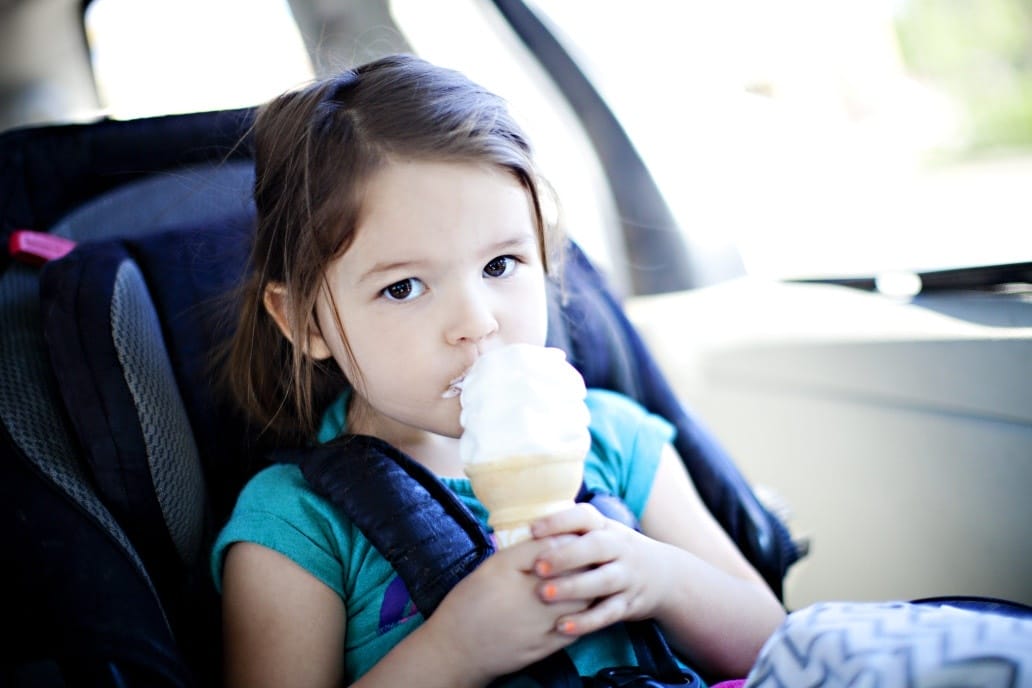Car seat safety guidelines every mama needs to know

Safety tips we need to follow for every ride, every time.
Table of Contents
The first car seat I remember riding in was more like a corduroy-covered roller coaster cart, complete with an upholstered bar to hold me back like on a ride at the amusement park. The contraption I recall looked very little like the one in the back of my car today—and not just because manufacturers realized corduroy and crumbs don’t go together.
Now, technology and parents are much more up to speed on how to keep kids safe while we’re cruising down the road. But that doesn’t mean we can’t all use a reminder on the best car seat safety guidelines.
Safety starts with the right seat
Car seats aren’t one-size-fits all, says Joseph Colella, Director of Child Passenger Safety for the Juvenile Products Manufacturers Association. Rather, it’s imperative to find a seat that fits your child and your car.
Especially for people new to this side of the car seat buckles, Colella recommends shopping at stores that allow you to test the models in your own car before the purchase is complete.
Don’t rush installation
Car seat installation can be intimidating and overwhelming to say the least. Of course, reading the directions is absolutely a must. And we should also cross reference that little book with our car’s owner’s manual.
Colella says the biggest car seat installation mistake parents make is not tightening the seat securely enough and, for older kids, not using the top tether strap when making the move to forward-facing car seats.
“You should not be able to move the seat more than one inch side to side or forward at the seat belt path,” Colella says—so if you can’t get it to that level of lock-down, seek out a certified Child Passenger Safety Technician near you. (Many fire stations can help. Just be sure to check ahead of time to see if there are certain hours when parents are welcome to get their car seats installed.)
Keep your child rear-facing as long as possible
Colella says most parents pick rear-facing infant-only seats as their children’s first rides, as those can be easily be moved on and off of bases and stroller travel systems. Those are great because they ensure the infant is rear-facing, but they’re not the only safe option.
“Convertible and all-in-one car seats typically have higher height and weight limits, so a child can stay rear-facing longer,” says Colella, who wants to see more parents keeping kids rear facing after they grow out of the easy-to-move infant-only seats. “Riding rear-facing provides support for the child’s head, neck and back throughout a crash event and cradles the head for less chance of an injury.”
Use the straps correctly
Loose straps are dangerous for little passengers, but parents can check to make sure they are tight enough with one simple move.
“You should not be able to pinch any of the webbing between your thumb and index finger,” Colella says. “If you can pinch webbing, the harness is too loose. The chest clip should be at the child’s armpits.”
Remember that boosters matter, too
When kids eventually exceed the maximum weight limit for their car seat, it’s time for a booster—a step that some parents skip.
“Without a booster, a child in a crash is more likely to have abdominal and internal organ injuries since adult belts don’t fit correctly,” Colella says. “A booster positions vehicle seat belts on the strongest parts of the body and away from the vulnerable abdomen.”
Kids should also ride in the backseat until the age of 13.
Follow safety guidelines for every ride
With ride-sharing services on the rise, Colella worries parents are hailing Ubers and Lyfts without bringing the car seat along. He says no matter if you’re in your car, a ride share, a taxi, a carpool or grandma’s car, the kids need to be buckled appropriately.
“Physics doesn’t change when you’re in a different vehicle,” he says. “Use a car seat for every ride.”
The same also applies to trips “just around the block,” as studies have shown a large proportion of vehicle accidents happen less than one mile from home.
As pesky as those car seat straps can feel when you’re strapping your child in a dozen times a day, I think we can all agree that hassle is but a VERY small price to pay for the benefits of safety in the car.


































